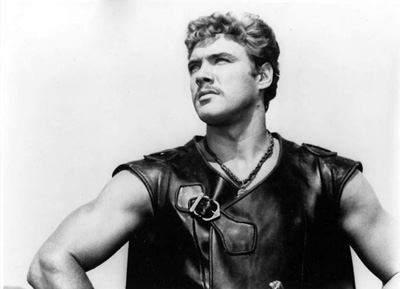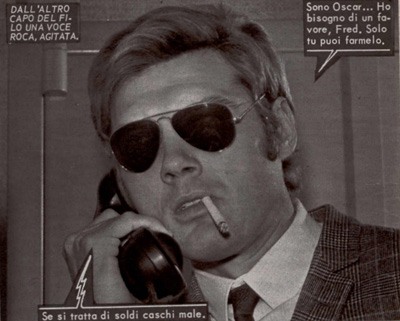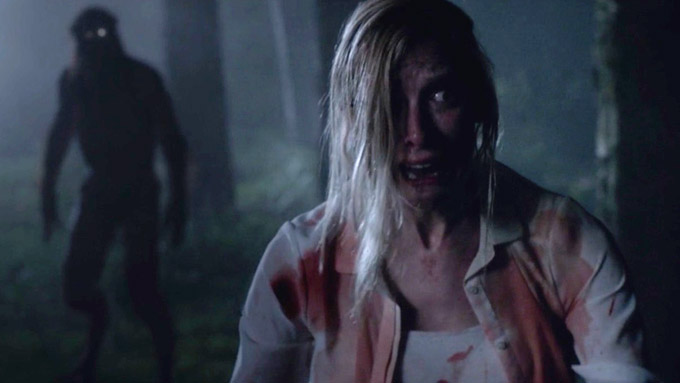
Kirk Morris was one of the gang of actors who found a certain degree of fame as stars of the Italian cycle of peplum films during the early 1960s. Mythological or swashbuckling adventures, one of the major selling points of these productions were their athletic, often downright muscle-bound leads. Many of these were imported from America: Steve Reeves was the highest profile name in the genre, but in his wake came the likes of Gordon Scott, Reg Park, Mark Forrest and Samson Burke, many of whom had at some point featured in the Jayne Mansfield stage show. Morris was unusual in that he was actually a native Italian rather than a foreigner; the only other local bodybuilder to have had a similar level of success was Alan Steel, aka Sergio Ciani.
Born Adriano Bellini on the 26th August 1942 (some sources claim 1938), Morris was initially discovered by a holidaying producer while working as a gondolier in his hometown of Venice. Still a teenager, he made the move to Rome, where he was promptly parachuted into his first film, The Triumph of Maciste, directed by Tanio Boccia and released in October 1961. Although he didn’t have any formal training as an actor, thespian skills weren’t really the highest priority for these kinds of films, which were instead intended to showcase their stars’ sculpted physiques and provide enough action and romance to keep the audience involved.

In truth, most of the peplum protagonists were pretty indistinguishable and what differences they did have were mainly superficial. Morris, because of his age, was presumably seen as someone who could appeal to youthful audiences and his look was tailored appropriately; the bleached-blonde pompadour hairstyle might not have been a traditional accoutrement of your standard mythological hero, but Morris made the style his own.
Following The Triumph of Maciste, he went on to star in a sequence of lesser peplums that were generally saddled with limited budgets and even more limited ambition. There was: Mario Mattoli’s Hercules in the Valley of Woe, an early parody featuring popular comic duo Franco and Ciccio; Guido Malatesta’s entertaining sounding but actually rather dull Colossus and the Headhunters and forgettable Maciste il vendicatore dei Mayas; and Miguel Lluch’s The Falcon of the Desert. Morris did get to work with some good directors. He was the lead in Riccardo Freda’s wacky favourite Maciste in Hell (a cult favourite if not a particularly good film), travelled to France to star in Bernard Borderie’s Clash of Steel and was one of the three leads in Pietro Francisci’s Hercules, Samson and Ulysses. But he was more commonly associated with director Tanio Boccia, a solid hack whose name became something of an in-joke in Cinecitta (a Boccia job). The two of them made another five peplums together following The Triumph of Maciste, none of which were of any particular note. (As a curious aside, it’s worth mentioning that an unusually high proportion of Morris’s peplums featured a desert location).
After the genre drew to an ignominious close in the mid-60s, with even the most undiscerning of audiences becoming bored of the increasing slipshod releases served up to them, many of the peplum stars found it difficult to get work elsewhere. Like them, Morris’s acting career stuttered on for a few years. He was in Pietro Francisci’s entertaining science fiction film 2+5 Mission Hydra, the musical spaghetti western Little Rita of the West and a pair of entertaining war films from Mario Siciliano, Overrun! and Seven Red Berets (although he hardly has a word of dialogue in either of these). He was reunited one final time with Tanio Boccia for his last film, the obscure Spaghetti Western Saguaro in 1971.

After the end of his time in Cinecitta, Morris actually went on to find more fame in a totally different medium, as the star of a hugely popular series of Fotoromanzi. Apparently beginning his fotoromanzi career as a producer of French publications, he grew tired of shuttling between Italy and France and took on a job at Lancio, intending to be a director. Instead he was cast as Dan Sharret in the cop fotoromanzi Jacques Douglas, making his debut in issue #44 in 1969. Surprisingly, given the humourless nature of his screen roles, Dan Sharret was a comic character, and he proved to be an incredibly popular one as well, not least because of Morris’s ability to pull funny expressions. He became – along with Franco Gasparri – one of the most recognisable faces of the medium, continuing in the part until 1978, after which he continued acting in a range of other fotoromanzi. His last appearance was in the 2001 release Dead End Road.
Other details about his life are sketchy. Apparently he live for many years in a house in the hills above Rome, and as a person was quiet and reserved, despite having a wicked sense of humour. Some accounts claim that he at one point moved to the United States, where he worked in advertising, before returning to Italy to work as a producer (although I haven’t been able to find any evidence to corroborate this).

I just finished watching Sansone contro i pirati and have a soft spot in my heart for Devil of the Desert v Son of Hercules. As always, the better print you see, the better the movie.
I have seen all of Adriano Bellini’s movies, and I think he was underrated. I liked him as hercules after Steeve Reeves, but he should have died his hair and beard black for that role. His physical stature is ectomorphic, but he built the best physique with what he had drug free. He had only 1-2 lines in Mission Hydra, but he displayed spectacular physicality. He was one of my childhood heros, and I’ll always be his biggest American Fan.
Hi Samson I second u
i met Adriano several Times] Great guy